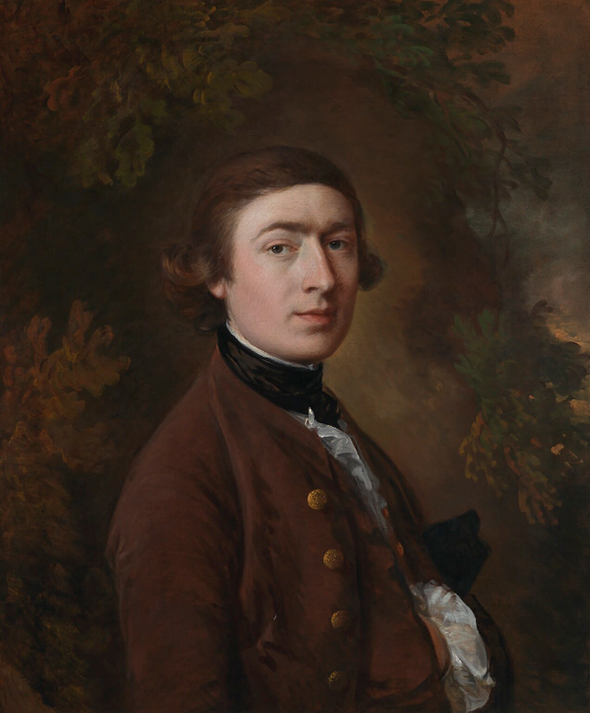
DECEMBER 1, 2018–MARCH 17, 2019
ABOUT THE Artist
Thomas Gainsborough (English, 1727–1788), Thomas Gainsborough, c. 1759. Oil on canvas, 30 x 25 in. Accepted in lieu of tax by H.M. Government and allocated to the Gallery, 1965, NPG 4446 © National Portrait Gallery, London
Thomas Gainsborough (1727–1788) looked to the pastoral scenery of his home region of Sudbury, Suffolk, England for inspiration as a young artist. Around 1740, Gainsborough attended St. Martin’s Lane Academy in London, a club-like artistic training program established by William Hogarth (1697–1762). Though Gainsborough preferred landscape painting, he entered the lucrative market for portraiture upon his return to Sudbury in 1748. Within a few years, he relocated his studio to Ipswich, a prosperous Suffolk trading port where he found greater patronage for his half- and full-length portraits painted with a bravura technique.
In 1759, Gainsborough and his family moved to Bath, a cosmopolitan spa town in the southwest of England. There, a diverse clientele of tourists and some of the town’s most distinguished residents, including members of the theater and music communities, commissioned portraits from the artist. In this period, Gainsborough sometimes derived poses and costumes for his more formal, elegant portraits from the work of Flemish baroque painter Anthony van Dyck (1599–1641), the leading court painter in England one century earlier.
During Gainsborough’s years in Bath, he maintained a presence in London by regularly exhibiting with the Society of Arts beginning in 1761; he became a founder-member of the Royal Academy in 1768. Later, however, Gainsborough would continually disagree with the institution about academic conventions and the hanging of his paintings. By 1774, the artist returned to London, settling in Schomberg House on Pall Mall. Despite Gainsborough’s increasingly contentious relationship with the Royal Academy—an institution founded through a personal act passed by King George III—he became a favorite painter of the king and his family. After the artist’s death in 1788, Sir Joshua Reynolds (1723–1792), president of the Royal Academy of Arts, eulogized Gainsborough: “Whether he most excelled in portraits, landscapes, or fancy pictures, it is difficult to determine. . . . Upon the whole we may justly say that whatever he attempted he carried to a high degree of excellence.”

